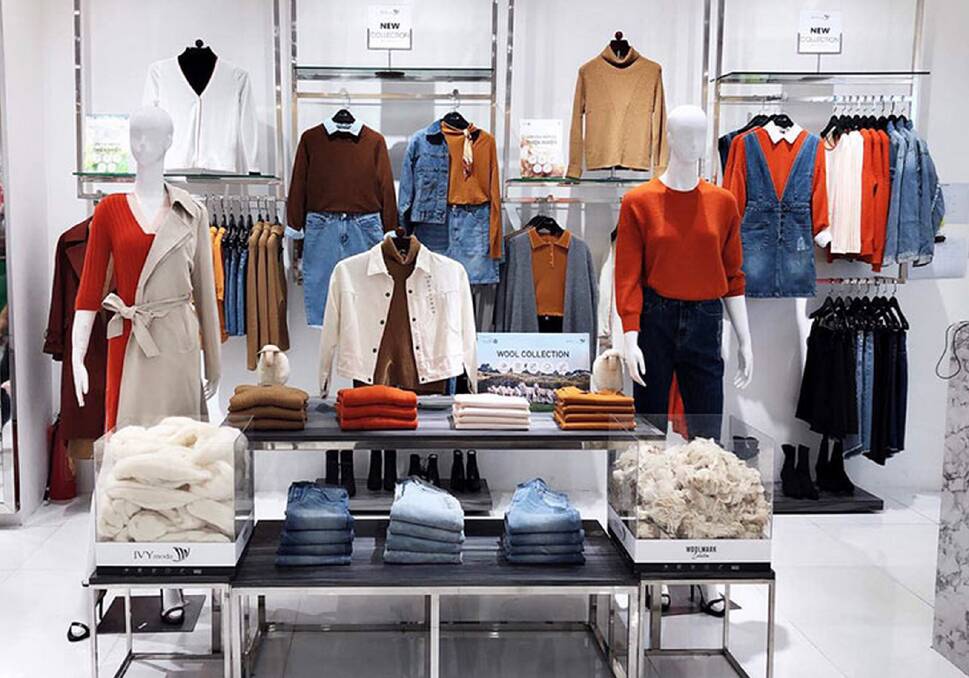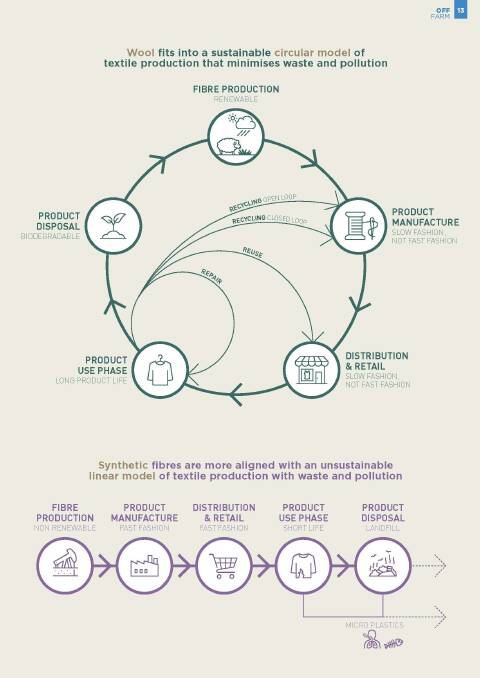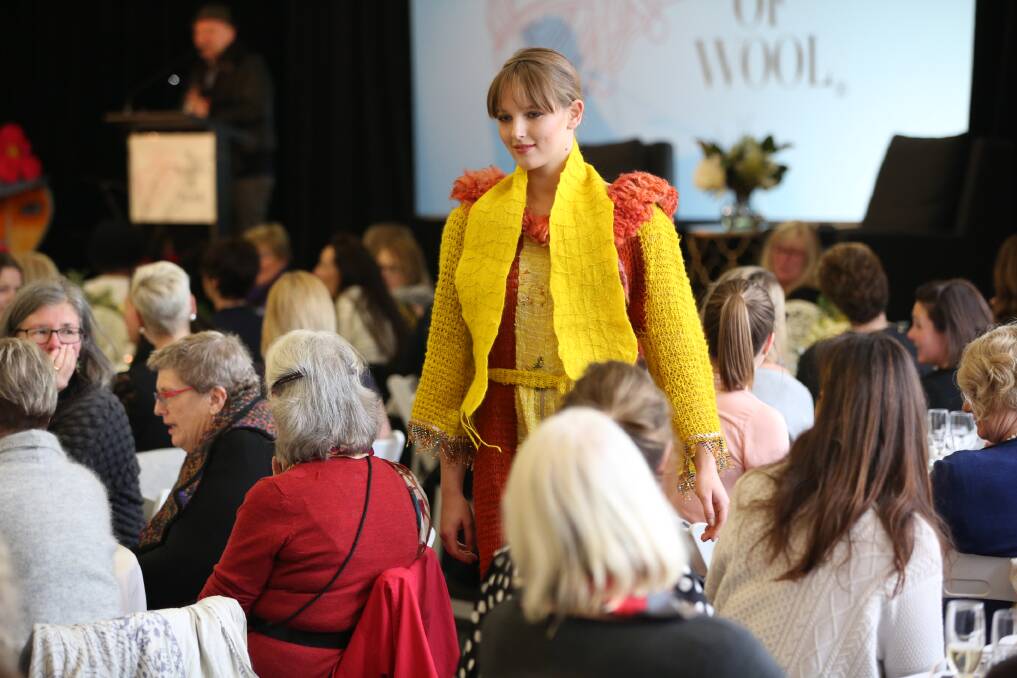
Few people follow consumer trends more closely than the fashion industry.
Subscribe now for unlimited access to all our agricultural news
across the nation
or signup to continue reading
The clothing experts are all agreed the day of fast fashion is coming to an end.
So do a lot of people in manufacturing and industry, even our own Australian Wool Innovation has modified its strategies to take advantage of it.
So what is fast fashion and why should Australian farmers care?
Fast fashion is still the dominant trend in fashion, but the writing is on the change-room wall that era is about to end.
Fast fashion is cheap and trendy clothing which attempts to copy-cat higher-end fashion ideas.
It uses cheap materials which allows garments to be produced in bulk but are not designed to last.
Consumers have become wise to the environmentally wasteful approach of fast fashion.
According to a "Pulse of Fashion" report, 75pc of consumers surveyed (in China, US, UK, France, Brazil) view sustainability as extremely or very important and 38pc of consumers have switched from their preferred brand to another because it credibly stands for positive environmental and/or social practices.
Consumers are increasingly demanding their clothes should not only look good, but be good for the planet.
The European Union is now considering policy to have environmental labelling on all consumer products, including apparel products, as soon as next year, in an effort to guide consumers towards choosing the most sustainable products.
Fast fashion's heavy reliance on synthetics means natural fibres like wool and cotton see a chance to cash in.
Wool needs less washing, is biodegradable and keeps its integrity for longer.
Australian Wool Innovation says it is already in the market promoting its fibre's green credentials.
AWI wants its growers to be on the same page.
"Australian woolgrowers should continue to ensure that their on-farm practices align with the sustainability expectations of consumers," growers have been advised.
"Regenerative agriculture is on the radar of the global fashion industry and is receiving a positive reception."

"For generations, Australian woolgrowers have managed their rural businesses effectively while also undertaking initiatives to protect the natural environment," AWI chief executive Stuart McCullough said.
"However, evidence of sustainable wool production is becoming critical to meeting the needs of increasingly environmentally-aware customers, and thereby ensure continued demand for wool in global markets," he said.
"Indeed, the more proactive brands are seeking evidence that woolgrowers are actively improving (or regenerating) the land, rather than just sustaining or maintaining the status quo. This is not about income from carbon credits; it goes beyond that.
"Furthermore, rather than simply working to maintain current demand and prices for Australian wool, the embracing of sustainability by brands provides the wool industry with a massive opportunity to capture further demand and increase the price of Australian wool."
Monash University researcher Aleasha McCallion said every 10 minutes, an estimated 6000kg of textiles and clothing are dumped in landfill in Australia.
Charities are overwhelmed, only one per cent of total collected disposed garments are recycled.
More than 100 billion garments are produced globally each year, with 33pc going to landfill within the first year of purchase.
The textile industry is estimated to emit 8pc of carbon emissions, and 20pc of the world's waste water.

Ms McCallion said people are discarding clothes they've never worn, or worn only once.
"And that's wasting our natural resources and contributing to our greenhouse emissions."
Even those who aren't interested in fashion still wear clothes and consume household textiles, she says.
"Although teenage girls with Instagram accounts are often blamed for buying - and then trashing - fast fashion, anyone who treats new clothes as disposable items is contributing to the problem," she believes.
"When a T-shirt is cheaper than a cup of coffee, people don't necessarily attach value to it, because it's been devalued," she said.
Ms McCallion and fellow researchers Julie Boulton and Jim Curtis say a circular textile economy would enable garments to be purchased, resold or repurposed for as long as possible, at scale.
Natural fibres could return to the biosphere at the end of their life.
At the same time, awareness is growing that consumers' habits and choices are ripe for change, which means that even high-volume, low-cost businesses are investigating how to adapt to a circular model.
Manufacturers are "also driven by who's working in their companies", she says. Tertiary fashion programs now include courses on sustainability, which means a growing number of graduates are gradually influencing their workplaces.
The fashion industry is also aware radical change is required to limit the impacts of microplastic shedding.
Some local businesses are already offering to repair or resell used items, or to recycle them at the end of their usefulness.
Ms McCallion wants clothing manufacturers to list the environmental cost of each garment on their labels - the volume of water consumed in the dyeing process, for instance, or to produce the rayon or the viscose.
She would also ban textiles from landfill to encourage the recycling or repurposing of unwanted Items, and the revaluing of textiles as a material resource.
And she would make it easier for industry players to have access to the latest information and research on innovative sustainable practices - how to incorporate recycled elements in garments, or how to minimise microfibre pollution, are some examples.
"Premiums will come to those woolgrowers who can market their eco and sustainability credentials," AWI's Mr McCullough said.
Start the day with all the big news in agriculture! Sign up below to receive our daily Stock Journal newsletter.


